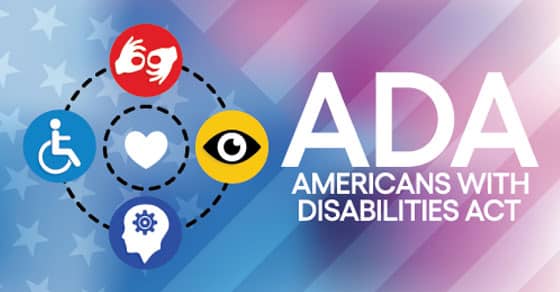The Americans with Disabilities Act (ADA) was enacted more than 30 years ago and has become one of the bedrock laws of employment compliance. As you’re no doubt aware, the ADA protects people with a wide variety of disabilities from discrimination in the workplace as well as in other contexts. And it continues to adapt to changing times.
Just last month, the U.S. Equal Employment Opportunity Commission (EEOC) updated its guidance on how the ADA applies to job candidates and employees with visual disabilities. The federal agency is urging employers to review and, if necessary, update methods used to evaluate applicants and job performance of employees — particularly if artificial intelligence (AI) has entered the picture. More specifically, the guidance addresses issues such as:
How an employer should treat voluntary disclosures about visual disabilities. The guidance clarifies that the ADA doesn’t require applicants to disclose a current or past visual disability before accepting a job offer unless they’re seeking a reasonable accommodation to help with the application process. The EEOC also reminds employers that, once hired, an employee may request an accommodation at any time.
What types of reasonable accommodations may be needed. The guidance notes that there’s “a wide range of possible changes in the application process, or in the way an employee performs the work” that can meet the definition of a reasonable accommodation for a person with a visual disability. Examples cited include:
- Braille or large-print written materials,
- Permitted use of guide dogs, and
- Ambient adjustments, such as more brightly lit work areas.
Which new (or newer) technologies may be used to provide reasonable accommodations. As one might imagine, today’s technology has greatly expanded the number of options for accommodating both job candidates and employees with visual impairments. The guidance points to examples such as:
- Text-to-speech software,
- Optical character recognition technology, which converts printed documents into screen-readable electronic form, and
- Smartphone and tablet apps with built-in accessibility features.
The guidance invites employers to check out the federal government’s Job Accommodation Network, which offers “free, expert and confidential guidance on job accommodations and disability employment issues.”
How using AI and algorithms to make employment decisions can impact compliance. Perhaps the timeliest issue addressed in the guidance is how AI, which is affecting more and more aspects of the workplace, could expose employers to an ADA violation. The EEOC warns that AI or algorithmically based decision-making tools might “intentionally or unintentionally ‘screen out’ individuals with disabilities in the application process and when employees are on the job.”
Employers have two primary obligations in this area: 1) As a potential warning to those with visual disabilities, you should provide information about how the technology in question evaluates applicants or employees, and 2) You must offer instructions for how to request a reasonable accommodation, which might take the form of an alternative testing format that would more accurately assess an “applicant’s or employee’s ability to perform the position, absent undue hardship.”
Inadvertently violating the ADA can lead to unexpected and substantial legal costs — not to mention the damage it might do to your employer brand. Work with your attorney to assess and address your risk. From there, our firm can help you quantify and analyze the costs of accommodation measures. To read the full text of the guidance, click here.
© 2023




